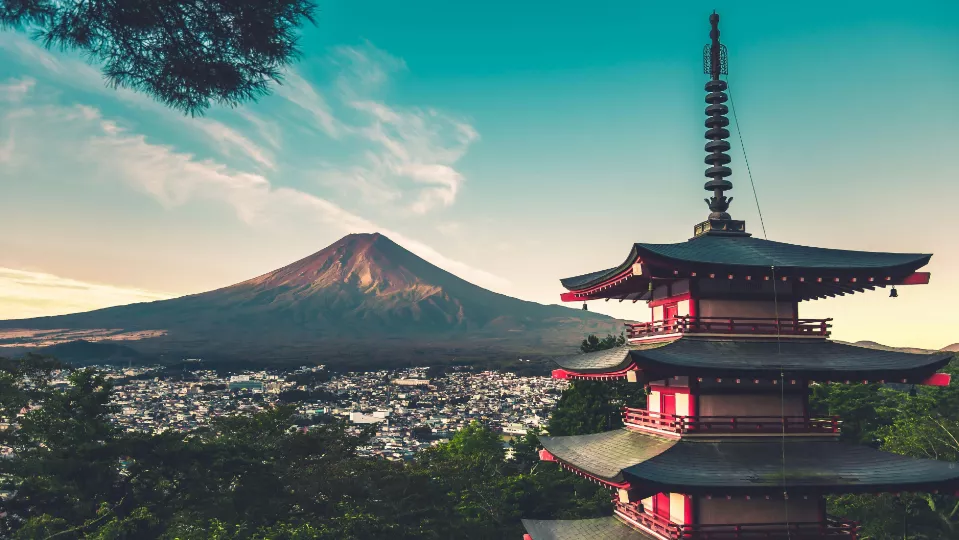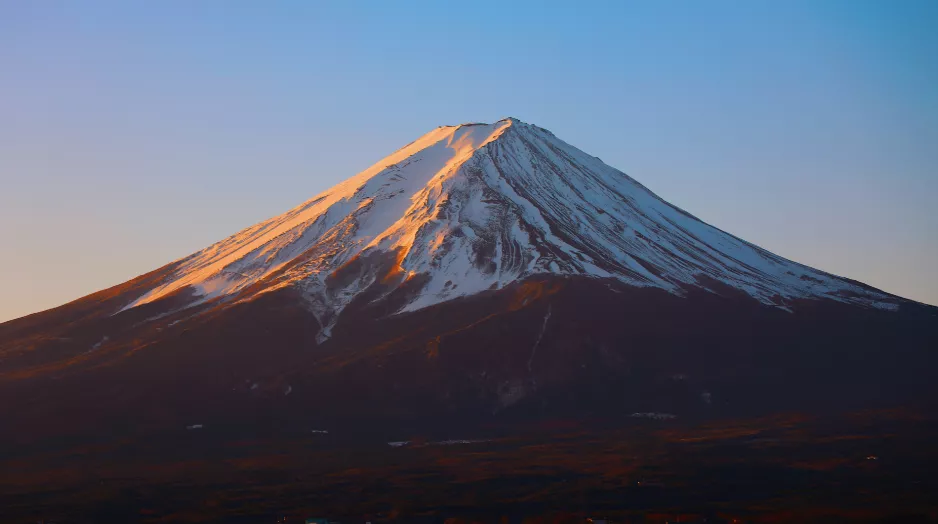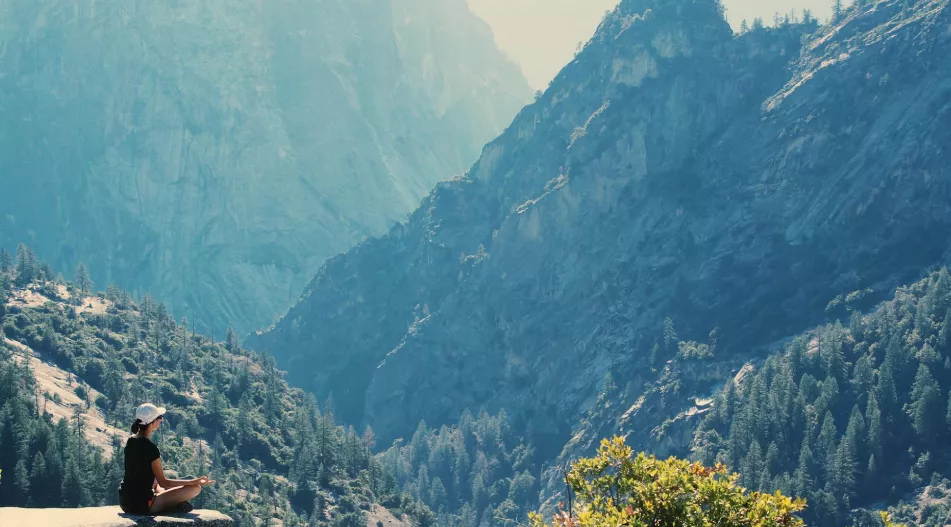Symbolic of Japan’s cultural heritage and natural splendor, Mount Fuji welcomes sightseers from throughout the globe. At 12,389 feet, this famous summit provides breathtaking vistas and a diverse array of experiences. Nature lovers and those in search of spectacular views will find an abundance of attractions in the area surrounding Mount Fuji, from picturesque hiking paths to traditional towns. Whether you’re an experienced climber or just searching for a beautiful spot to unwind, this region of Japan is sure to provide you with fantastic memories.
Everything You Need to Know
- Mount Fuji is a UNESCO World Heritage Site, celebrated for its cultural and natural significance.
- The area around Mount Fuji is rich in hiking trails, lakes, and hot springs, perfect for nature lovers.
- Cultural landmarks like temples and traditional villages provide insight into Japan’s history and lifestyle.
1. The Majestic Beauty Of Mount Fuji
A Symbol of Japan
Mount Fuji is a majestic landmark. Just thinking about Mount Fuji evokes images of old Japan. Are you aware of Mount Fuji? An emblem of our nation, it is more than just a hill. Both sake bottles and postcards include it. Seeing Fuji-san is an essential part of any Japanese vacation. It captures the essence and charm of the area.
Cultural Significance
Fuji is more than just a pretty face; it has deep cultural significance. As a sacred location and pilgrimage spot, it has tremendous religious and spiritual significance for many generations. Artists and writers have always included it in their works, either directly or indirectly. With the mountain in the background, many poems and woodblock prints are created. More than that, a mountain can serve as an inspiration. A big chunk of Japan’s character is this.
Ecological Features
Frankly, I don’t care whether you think Fuji is beautiful; it is a volcano. It is thankfully dormant. Careful geometrical planning gave it its signature cone shape. Impressively, it reaches a height of over 12,000 feet. Reignition occurred long ago, around the beginning of the 17th century. Lakes and hot springs are elements of the wider volcanic environment that includes reignition. This line of work might be incredibly intriguing if you’re into geology.
Mount Fuji has a significant effect on the local ecology and its rich natural resources due to its geological composition. The volcanic soil improves the area, provides a home to many different kinds of plants and animals, and even affects the local climate and water cycles.

2. Taking in the Natural Scenery Surrounding Mount Fuji
Mount Fuji is more than just a picturesque peak—it’s surrounded by stunning natural beauty that invites exploration and relaxation. Whether you’re hiking, relaxing by a lake, or simply observing the local flora and fauna, this area offers a refreshing perspective on Japan’s landscapes.
Hiking Paths and Itineraries
Mount Fuji offers a wide range of hiking options, from easy walks to challenging climbs. You don’t have to summit the mountain to enjoy its beauty. The trails around the Fuji Five Lakes, for example, offer breathtaking views with moderate effort. Other trails wind through serene woodlands and past cascading waterfalls. Always check the current trail conditions and difficulty levels before setting out. Some popular routes include
- The Yoshida Trail is the most popular path for climbers aiming to reach the summit.
- The Subashiri Trail is renowned for its scenic journey through forested areas.
- The Gotemba Trail is the longest and least crowded of the main trails, making it ideal for solitude seekers.
Lakes and Hot Springs
There is a solid reason why the Fuji Five Lakes region is a popular tourist spot. There are a lot of hotels, restaurants, and breathtaking views around Lake Kawaguchi, making it stand out. Travelers have the option to go boating, fishing, or just unwind on the beach.
Nothing compares to relaxing in an old-fashioned onsen (hot spring) after a long day of sightseeing. To top off your relaxing experience, several onsen in the area have breathtaking views of Mount Fuji.
Flora and Fauna
Biodiverse species abound in the area surrounding Mount Fuji. Amidst forests populated with Japanese cedar and pine trees, vivid wildflowers blossom in the spring and summer. Birds, deer, and monkeys are all possibilities for nature lovers. This region is perfect for ecotourists and those who love the outdoors because of its diverse ecosystem.
Particularly interesting are the woods that encircle the peak. Natural areas are vital reminders of the value of preserving our planet’s air, water, and soil, thanks to their varied flora and fauna.
3. Cultural Landmarks Near Mount Fuji
Temples and Shrines
Countless temples and shrines encircle Mount Fuji, each with its own profound historical and spiritual link to the mountain. People have been flocking to these holy sites for generations in search of quiet, contemplation, and oneness with nature. The head shrine of all Sengen shrines, Fujisan Hongū Sengen Taisha Shrine, is a remarkable example. To the deity Konohanasakuya, who resides atop Mount Fuji, they are offered.
Enjoy a leisurely stroll through the peaceful grounds, breathe in the peaceful air, and gain insight into the spiritual traditions of the area. Another great method to immerse yourself in the culture is to go to a festival. Also, don’t miss the lesser-known shrines; they can have a more personal allure and fascinating history than the more famous ones.
Traditional Villages
Traditional settlements that seem like time capsules of old Japan are tucked away near Mount Fuji’s base. Their traditional crafts, beautifully preserved residences, and laid-back lifestyles offer a glimpse into the nation’s cultural heritage.
Oshino Hakkai stands out as a picturesque village that receives its water supply from the snowfall of Mount Fuji. The eight ponds in the village are famous for their cleanliness and beauty. Behold, the sight of the mountain mirrored in the lake is quite magnificent. Take a stroll around the quaint village, eat some local food, and see the thatched buildings. Despite the crowds, it is well worth the wait to see how humans have coexisted with the natural world for eons.
Both writers and painters have traditionally looked to Mount Fuji as a source of inspiration. Many works immortalize its unique shape, from Hokusai’s renowned woodblock prints to ancient poetry. It gives depth to following in their footsteps.
Where to See Mount Fuji Like Hokusai Did
Panoramic Views
For truly unforgettable vistas of Mount Fuji, refer to these prime locations:
- One of the five lakes that make up Fuji, Lake Kawaguchi is famous for having picture-perfect reflections on calm days. Take a stroll along the beach or charter a boat for some fresh views.
- Famous for its hot springs and stunning scenery, Hakone also provides breathtaking views of Lake Ashi, especially from the Hakone Ropeway, which is located at a higher elevation.
- During cherry blossom season, the vista from Chureito Pagoda—a classic pagoda with Mount Fuji in the backdrop—is really stunning.
Advice for Photographers
Capturing the perfect shot of Mount Fuji takes a little planning:
- Shoot just before sunset or after sunrise for the best light.
- If you want clear skies, you should look at the weather forecast and try to go early in the morning when you can see the peak.
- To give your photographs more depth and personality, try placing foreground objects such as trees, lakes, or temples.
Changing Seasons
Mount Fuji transforms dramatically throughout the year:
- Delicate pink petals frame the mountain in the spring, creating a beautiful view.
- In the summer, the verdant foliage that envelops the mountain’s base provides a striking visual contrast to the mountain’s snow-capped peak, assuming any is still there.
- In the fall, the leaves change color from green to a patchwork of reds, oranges, and yellows, creating a beautiful and welcoming scene.
- In winter, the mountain is covered in a thick layer of snow, making for dramatic and imposing scenery. It can be chilly in the winter, but many people think that’s when you’ll get the clearest views.
Mount Fuji can be elusive, often hidden behind clouds, but with patience, you’re likely to catch a breathtaking view. Bring your camera, take your time, and soak in the majesty. While you’re in the area, don’t miss the relaxing hot springs of Hakone—a perfect way to end a day of sightseeing.
A Last Remark about Fuji Mount
In the end, there’s a lot more to a trip to Mount Fuji than that. The primary objective is to fully immerse oneself in the local culture and landscape surrounding this renowned summit. Whether you’re hiking its routes, unwinding in a hot spring, or sipping matcha while admiring the environment, every moment is an opportunity to experience Japan. With each passing moment, the memories weighed heavily on my heart, and my awe for the gorgeous environment grew. If the opportunity presents itself, don’t hesitate to take it. Mount Fuji is patiently waiting for you, so I assure you it will be worth the wait.
Answers to Common Questions
- Mount Fuji, what is it?
The highest peak in Japan, Mount Fuji, rises to 12,389 feet (3,776 meters) in altitude. The striking symmetry of this active volcano has brought it widespread acclaim.
- What role does Mount Fuji have in Japanese tradition?
The cultural and symbolic importance of Mount Fuji to Japan is immense. Because of its spiritual status, it has served as a source of inspiration for poets, painters, and pilgrims for generations.
- Around Mount Fuji, what are some common things to do?
Outdoor activities abound, including hiking, exploring lakes, relaxing in hot springs, and a host of other sports.
Everything you need—flights, hotels, car rentals, bike rentals, taxis, and eSIMs for travelers—book it all with Voyage Magnets.





